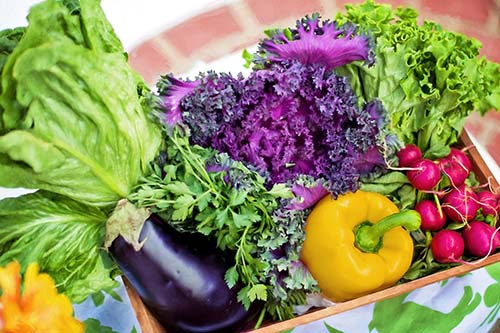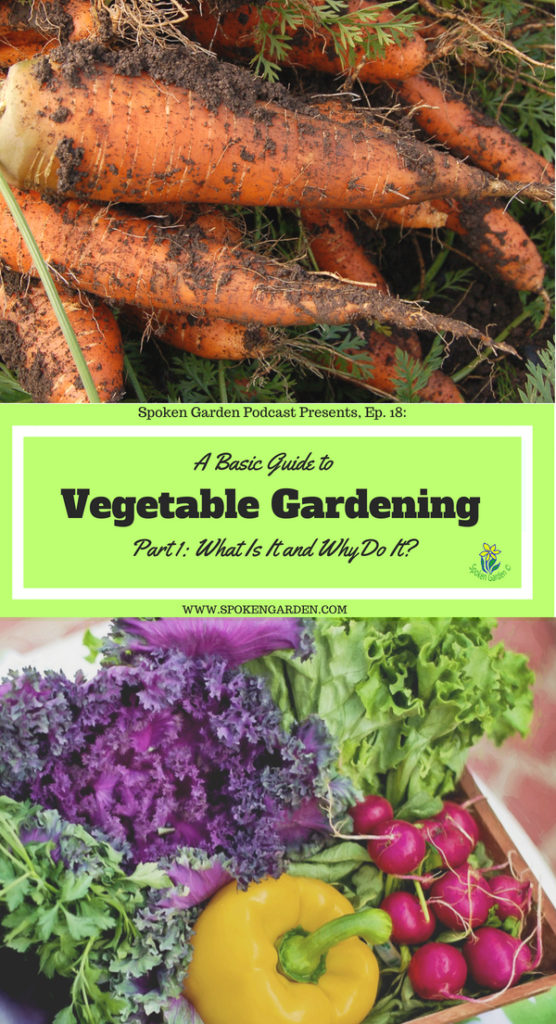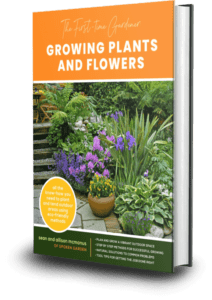Vegetable gardening can sound like an overwhelming task if you don’t know the basics.
You might wonder whether you should build a vegetable garden in the first place or question what the benefits are of constructing your own garden.

From eating food grown in your own garden to saving money, this is one DIY garden project you should definitely consider!
On Episode 18, we will walk you through our personal home vegetable garden building project and give you some tips and tricks on where to place your garden, which soil to use, how to plant your crops, and some basic maintenance advice.
This episode is for those of you who need help creating your very own vegetable garden, including how to build raised beds, where to place them, and which fruits and vegetables you wish to grow.
This is part one of our two-part podcast series on vegetable gardening basics. Listen to part 2 here.
How to Start a Vegetable Garden From Scratch
Armed with just a little background knowledge and your “green thumb,” you can create a food-producing garden worthy of your dinner plate!
By starting with a few basic questions, you can begin to design your space.
Ask yourself:
- Where should I set up my new garden on my property?
- What area in my yard gets the best sunlight?
- Do I want to use raised garden beds, pots, or plant straight in the ground?
- What kind of fruits and vegetables do I want to grow?
- How should I layout my garden?
- How can I eliminate pests?
You need to have a plan and know which vegetables and fruits you will be growing before you build and place your garden in your yard.
Most of the popular fruits and vegetables are sun-loving for 6+ hours a day and require well-draining soil with ample water.
Raised Garden Beds
A raised garden bed is useful for SO many reasons.
It is elevated above the surrounding environment which offers protection from pests or various forms of wildlife. Another bonus is that these beds are easier to reach for harvesting or maintenance.
This type of garden bed has specific soil that is protected from compaction by foot traffic or machinery, and since it’s elevated it can prevent weeds from the surrounding garden.
For more about raised garden beds, including how to construct your own, read this post.
Growing Vegetables For Beginners
Warm-Season Crops
In general, you can start growing warm-season vegetables after the threat of the last frost has passed in your area.
Started either by seed or plant start, these are vegetables that would be harvested during spring and summer seasons.
Examples of warm-season crops:
- Cucumbers
- Tomatoes
- Peppers
- Squash
- Corn
- Pumpkins
Cold-Season Crops
Cold season fruits and vegetables can be grown either for a late fall or early spring harvest
For a late fall harvest, plantings need to be made by mid to late summer (in general).
An early spring harvest requires plants to be in the ground by mid to late fall or winter.
Examples of cool-season crops:
- Lettuce
- Kale
- Brussel Sprouts
- Cabbage
- Carrots
- Cauliflower
To help you get started, check out our free spring garden shopping list on our free resource library page!
And hey—before you head out—if you want to connect with us and subscribe to our newsletter go to Spoken Garden’s free resource page! We have FREE content we are so excited to give to you! See you there!
Thanks for Listening!!
Share your thoughts:
- Leave a note in the comment section below.
- Leave comments/ suggestions at Spokengarden@gmail.com
- Share our show on Twitter, Facebook, or Pinterest
To help out our show:
- Leave a review on iTunes. Your ratings and reviews really help us out!
- Subscribe on iTunes or Spotify.
*Spoken Garden is a participant in the Amazon Services LLC Associates Program, an affiliate advertising program designed to provide a means for sites to earn advertising fees by advertising and linking to Amazon.com.
*Spoken Garden is a participant in the Amazon Services LLC Associates Program, an affiliate advertising program designed to provide a means for sites to earn advertising fees by advertising and linking to Amazon.com.
Subscribe on iTunes
Today’s Topic:
Vegetable Gardening Basics
Learn how and why to build a vegetable garden. Also, learn about the benefits of building raised garden beds.
Downloads:
Show Notes
Spring Garden Shopping List on our Free Resource Library
“And That’s Good to Know” Segment
Alternating Mowing Patterns For The Health of Your Lawn.
What You’ll Learn:
- Beginner’s definition of vegetable gardening basics.
- Benefits of constructing raised garden beds
- Suggestions for fruits and vegetables you could grow.
- Why alternating your mowing patterns is healthy for your lawn.
Resources:
Some of the resources below may be affiliate links, meaning we might get paid a commission (at no extra cost to you) if you use that link to make a purchase.
- Ep 19: Vegetable Gardening, Part 2- How to Place and Build Your DIY Raised Garden Bed.
- 3 Simple Things Gardeners Should Consider Before Planting a Vegetable Garden: Garden Basics Part 1.
- 9 Fruits and Vegetables to Plant Right Now For a Summer Harvest!
- How to Build Your Very First Raised Garden Bed
- Helpful mowing pattern ideas.
Recommended Products Mentioned in This Podcast:



